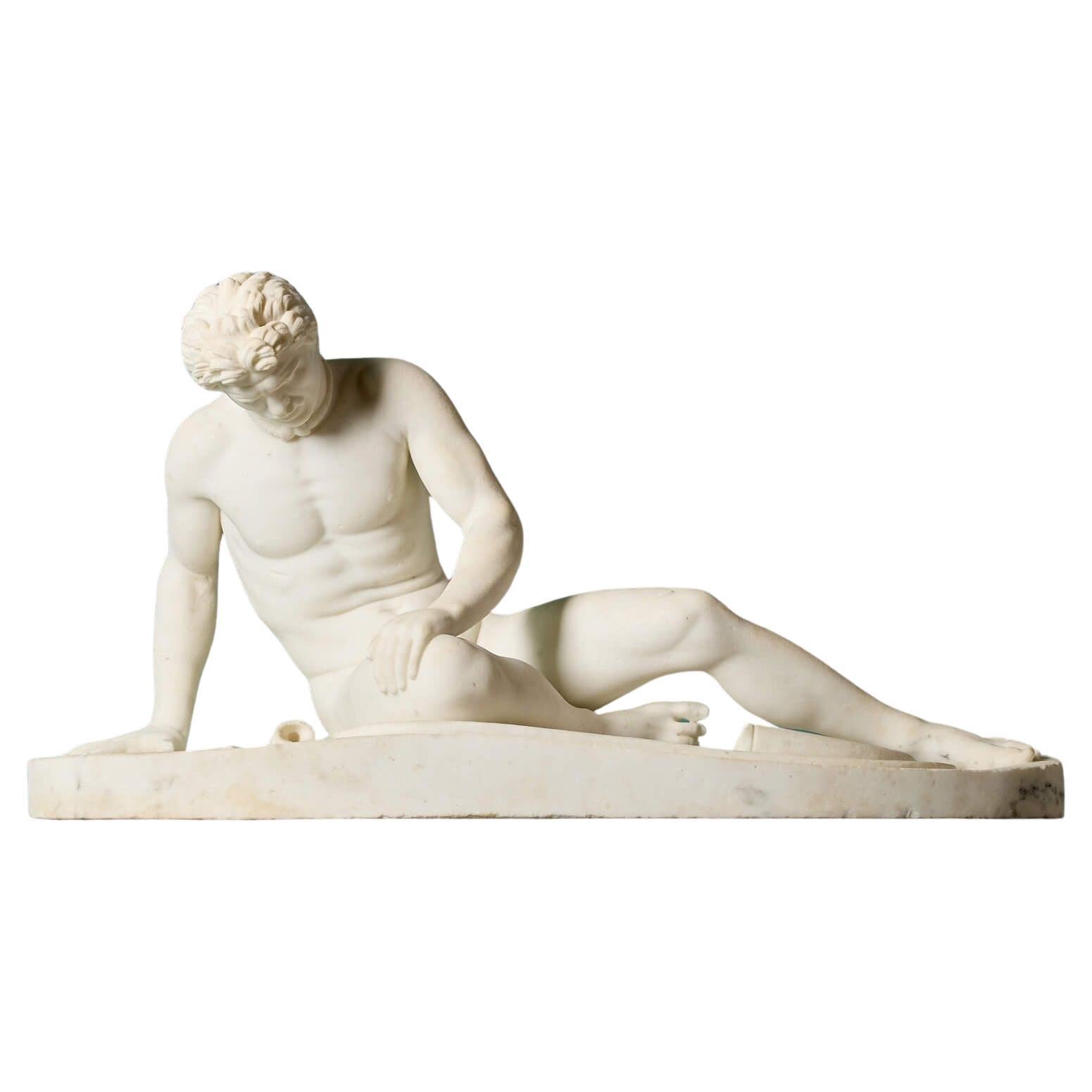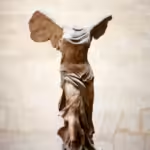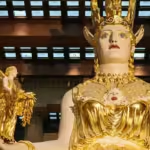In the realm of artistic masterpieces, few works evoke as much emotional depth and philosophical reflection as the Dying Gaul. This extraordinary statue transcends its stone form to become a poignant symbol of human vulnerability, strength, and the inevitable nature of mortality. Crafted during the heights of Roman artistry, the Dying Gaul embodies not just the aesthetic brilliance of its time but also serves as a mirror reflecting the essence of the human condition.
The Historical Context of Dying Gaul

The Dying Gaul is steeped in rich historical significance that extends beyond mere artistry. To fully appreciate this timeless sculpture, we must delve into the context in which it was created, uncovering the layers of its meaning and the cultural narratives it represents.
Artistic Roots in Hellenism

The origins of the Dying Gaul can be traced back to the Hellenistic period, a time characterized by profound advancements in art, philosophy, and science.
This era shifted the focus of art from idealized forms to more realistic representations, allowing artists to explore complex emotions and human experiences. The Dying Gaul exemplifies this transition by capturing an agonizing moment filled with raw emotion.
Artists of the Hellenistic era were known for their ability to convey movement and the interplay of light and shadow, techniques that breathe life into the marble. In the Dying Gaul, the figure’s contorted pose and the intricate details of his expression reveal the pain of defeat while simultaneously celebrating the noble spirit of the warrior.
The Symbolism of the Gaulish Warrior

The figure represented in the Dying Gaul is not just any soldier; he symbolizes the vanquished yet resilient spirit of the Gauls. The statue memorializes the military victories of King Attalos I of Pergamon, who famously fought against the Galatians.
This artistic choice reflects the Romans’ desire to commemorate their triumphs and assert their dominance over other cultures. Yet, paradoxically, the sculpture prompts viewers to empathize with the defeated warrior rather than revel in the victor’s glory.
By portraying a Gaulish warrior who lies dying, the artist challenges us to confront our own perceptions of victory and defeat. The warrior’s proud posture suggests that true strength lies not only in conquest but in the dignity with which one faces their demise.
Cultural Reflections on Mortality
The notion of a noble death has been revered in many societies, particularly in ancient Greek and Roman cultures. The Dying Gaul embodies this ideal by presenting the warrior in a moment of profound vulnerability, yet he retains a sense of pride and honor in his sacrifice.
This duality speaks to a universal truth: even in moments of ultimate surrender, there exists a beauty and dignity that transcends the physical state of being. As spectators, we are compelled to reflect on our values, the legacies we leave behind, and how we want to be remembered after our journey ends.
Analyzing the Artistic Techniques of Dying Gaul

The technical mastery displayed in the Dying Gaul contributes significantly to its emotional impact, serving as a bridge between the artist’s intent and the viewer’s experience.
The Craftsmanship of Marble

The choice of medium—marble—plays an essential role in the Dying Gaul‘s creation. Marble has long been associated with grandeur and permanence, making it an ideal material for monumental sculptures meant to last through the ages.
The smoothness of the marble contrasts sharply with the roughness of the subject’s fate, creating a tension that invites viewers to engage with the artwork on multiple levels. Each detail—the curves of the body, the anguish on the face, the flowing hair—illustrates the artist’s attention to realism and the intricacies of human anatomy.
Through the careful chisel work, the artist imbues the stone with a sense of life, transforming it into a conduit for emotional expression. The way light dances across the surface of the marble further enhances this effect, revealing subtle variations in tone that echo the nuances of the warrior’s experience.
The Pose and Composition
Central to the Dying Gaul is the warrior’s pose, which conveys a powerful narrative of defeat and acceptance. The position of the body, slightly reclined with one arm extending outward, suggests a moment of surrender, yet it remains defiant in its beauty.
This composition challenges traditional representations of heroes in art, which often depict figures standing proudly in the midst of victory. Instead, the Dying Gaul invites us to reconsider what heroism truly means. Is it not found in unwavering strength but also in the capacity to embrace one’s vulnerabilities?
The juxtaposition of life and death within the composition raises questions about the nature of existence. It illustrates that every journey must ultimately lead to an end, yet that end does not diminish the value of the life lived or the struggles endured along the way.
Emotions Captured in Stone

One of the most striking attributes of the Dying Gaul is its ability to evoke profound emotional responses from viewers. The expression on the warrior’s face encapsulates a myriad of feelings—pain, resignation, and perhaps a glimmer of peace.
Art has the power to transcend language and culture, connecting individuals through shared emotions. The Dying Gaul achieves this by drawing us into an intimate moment, compelling us to empathize with the warrior’s plight.
This emotional depth resonates with audiences across generations, reminding us that despite the passage of time, the core human experience remains unchanged. The artwork becomes a modern-day reflection of our struggles, fears, and hopes, prompting us to confront our mortality and seek meaning in our lives.
The Psychological Dimensions of Dying Gaul
Art is often a window into the human psyche, and the Dying Gaul is no exception. Through its portrayal of a dying warrior, the sculpture navigates complex psychological landscapes that resonate deeply within us.
The Acceptance of Mortality

At its core, the Dying Gaul offers a meditation on mortality and the acceptance of death. The figure’s serene expression suggests a profound understanding of the inevitability of life’s end, encouraging us to reflect on our own relationship with death.
Philosophers throughout history have explored the idea that acknowledging our mortality can lead to a richer, more meaningful existence. By confronting the reality of death, we are inspired to live more fully, embracing each moment as an opportunity for growth and connection.
The warrior’s acceptance serves as a reminder that life is fleeting, urging us to pursue our passions and cherish our relationships while we still have the chance. The Dying Gaul embodies this wisdom, beckoning us to consider how we want to approach our own mortality.
The Struggle Between Courage and Despair

As we observe the Dying Gaul, we are drawn into an internal struggle that mirrors our own. The statue presents a compelling dichotomy between courage and despair—a battle faced by many when confronted with adversity.
Despite the physical pain evident in the warrior’s features, there exists a sense of inner strength that refuses to be extinguished. This portrayal of resilience in the face of suffering evokes admiration and inspires us to cultivate our own courage in challenging circumstances.
The Dying Gaul ultimately serves as a metaphor for the universal human experience—navigating the complexities of fear, hope, and the search for meaning amidst chaos. It compels us to rise above despair and find purpose in our struggles, reinforcing the belief that even in our darkest moments, we possess the capacity for greatness.
Cultural Reflections on Identity

The Dying Gaul can also be viewed as a commentary on identity and the interplay between personal and cultural narratives. The warrior’s status as a Galatian soldier signifies a broader exploration of the self in relation to society.
In a world where identities are often constructed and deconstructed, the Dying Gaul reminds us of the lasting impact of heritage and history. The warrior’s story transcends individual experience, embodying collective memory and the shared struggles of a people facing obliteration.
This aspect of the sculpture encourages us to examine our own identities, questioning how culture shapes our understanding of self and community. The Dying Gaul stands as a testament to the importance of recognizing our roots while navigating the ever-evolving landscape of human existence.
The Enduring Legacy of Dying Gaul

Though centuries have passed since its creation, the Dying Gaul continues to captivate and inspire. Its legacy is woven into the fabric of art, literature, and culture, demonstrating the timelessness of its themes and emotional resonance.
Influence on Modern Art and Literature
The allure of the Dying Gaul has left an indelible mark on the artistic landscape, influencing countless artists and writers throughout history.
From neoclassical sculptures to contemporary installations, the statue’s emotional depth and technical mastery serve as a benchmark for excellence in artistic expression.
Writers, too, have drawn inspiration from the Dying Gaul, weaving its imagery and themes into their narratives. The struggles of the warrior resonate with characters in literature who grapple with their own mortality and fight against despair. Thus, the Dying Gaul fosters a dialogue across artistic disciplines, solidifying its place in the canon of Western culture.
A Symbol of Human Resilience

Beyond its artistic achievements, the Dying Gaul emerges as a powerful symbol of human resilience—a reminder that beauty can be found in the midst of suffering.
In a world often plagued by turmoil and uncertainty, the message conveyed by the statue holds particular relevance. The warrior’s enduring dignity amid pain serves as an encouragement to persevere, prompting us to confront our challenges with grace.
The Dying Gaul urges us to acknowledge our struggles while celebrating our capacity for strength and transformation. It invites us to recognize the shared human experience of vulnerability, unity, and hope, fostering a sense of belonging in an increasingly fragmented world.
Engaging Conversations Across Cultures

The impact of the Dying Gaul extends well beyond its physical presence; it sparks meaningful conversations about life, death, and the human experience across cultures.
As a piece of shared heritage, the statue serves as a focal point for discussions surrounding art, philosophy, and ethics. The emotions it evokes resonate universally, transcending barriers of language and geography.
In an age marked by globalization and interconnectedness, the Dying Gaul fosters cross-cultural dialogues that encourage mutual understanding and appreciation of diverse perspectives. By engaging with this masterpiece, we are reminded of our shared humanity and the collective stories that shape our existence.
Conclusion

The Dying Gaul stands not only as an artistic marvel but also as a testament to the complexity of the human experience. Through its evocative form and profound themes, the statue invites us to confront our mortality, celebrate resilience, and explore the depths of our emotions.
As we gaze upon the Dying Gaul, we are reminded that the struggles of the past continue to resonate in our present, urging us to navigate our lives with intention and empathy. Ultimately, this timeless masterpiece serves as a bridge connecting us to our shared humanity, enriching our understanding of ourselves and the world around us—a journey that will endure in the realms of art, thought, and existence for generations to come.
✉️ Stay Connected — Subscribe for Weekly Updates
Discover timeless stories, practical wisdom, and beautiful culture — delivered straight to your inbox.
*We only share valuable insights — no spam, ever.






